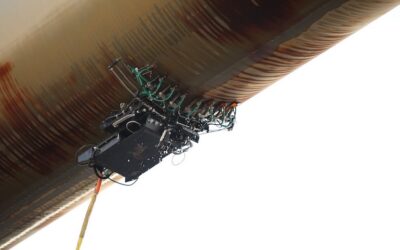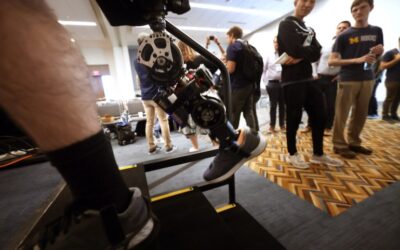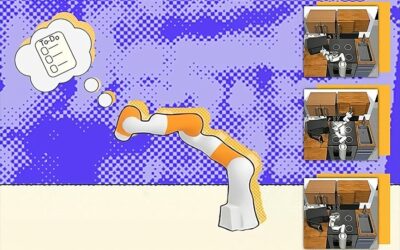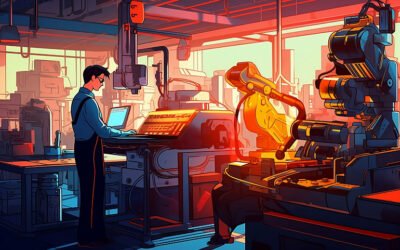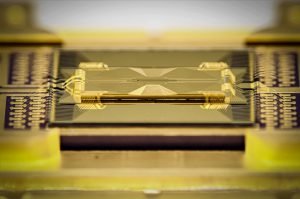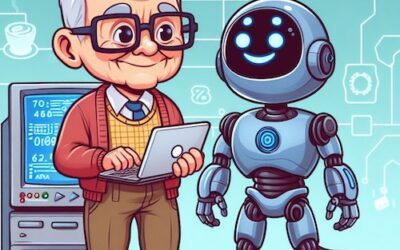Robotics News
Gecko Robotics, Rho Impact study how robots and AI could improve sustainability
Robots and artificial intelligence have a significant role to play in maintaining crumbling infrastructure — and they could help bring about a zero-carbon economy while they’re at it. That’s the conclusion of a new report by Gecko Robotics and Rho Impact, which...
EU Member States Commit to Cooperating on World-Class Quantum Tech
Twenty one EU Member States have now joined the European efforts to make Europe the “quantum valley” of the world by signing the European declaration on quantum technologies during a conference organised today by the Belgian Presidency of the Council of the EU. The...
Northeastern University Mars Rover Team wins Winter Canadian International Challenge
When the student leaders of the Northeastern University Mars Rover Team decided they were going to participate in the inaugural Winter Canadian International Rover Challenge, they thought it would be good practice more than anything else. They didn’t expect to win the...
Researchers developing more natural robotic leg control
A smoother experience for robotic prosthetic leg users is the aim of a University of Michigan project that has received renewed support from the National Institutes of Health. The R01 grant of $3 million will also enable the implementation of the researchers’ improved...
Northeastern students develop robotic boat to attack invasive plants
Northeastern team designs robot to detect aquatic weeds Enter the Hydrilla Hunter, an autonomous robotic boat outfitted with a hyperspectral camera designed to detect and identify the invasive plant. McKissick helped develop the boat with a dozen other Northeastern...
Multiple AI models help robots execute complex plans
Your daily to-do list is likely pretty straightforward: wash the dishes, buy groceries, and other minutiae. It’s unlikely you wrote out “pick up the first dirty dish,” or “wash that plate with a sponge,” because each of these miniature steps within the chore...
AI job automation will happen gradually, says MIT CSAIL
A new study from MIT CSAIL, MIT Sloan, The Productivity Institute, and IBM’s Institute for Business Value provided more insight into how artificial intelligence could affect the job market. Its findings challenge the common belief that AI will put vast numbers of...
Scientists Create Advanced DNA Nanomotor Using Supercomputing, Offering New Insights into Nanotechnology
Scientists have created the world’s first working nanoscale electromotor, according to research published in the journal Nature Nanotechnology. The science team designed a turbine engineered from DNA that is powered by hydrodynamic flow inside a nanopore, a...
IonQ Surpasses Milestone: Achieves 35 Algorithmic Qubits Ahead of Schedule
IonQ , a leader in the quantum computing industry, announced that it hit its target technical milestone of 35 algorithmic qubits (#AQ) a full year ahead of schedule. This important milestone was achieved on IonQ Forte and leveraged the unique advantages of IonQ’s...
5 robotics startups Bill Gates is excited about
There has been $90 billion invested in robotics companies in the last five years, according to F-Prime Capital’s 2023 State of Robotics Report. With more than 1,250 companies currently within the industry, it can be hard to sift through them all to pinpoint the most...
Advanced Computational Tool for Understanding Quantum Materials
Researchers at the University of Chicago’s Pritzker School of Molecular Engineering (PME), Argonne National Laboratory, and the University of Modena and Reggio Emilia have developed a new computational tool to describe how the atoms within quantum materials behave...
Researchers Report Advance in Achieving Room Temp Entanglement
Room temperature quantum computing and sensing has long been an area an area of intense pursuit; if accomplished, it will simplify and expand quantum information science (QIS) applications. This week, a group of researchers from Japan report a breakthrough using...

